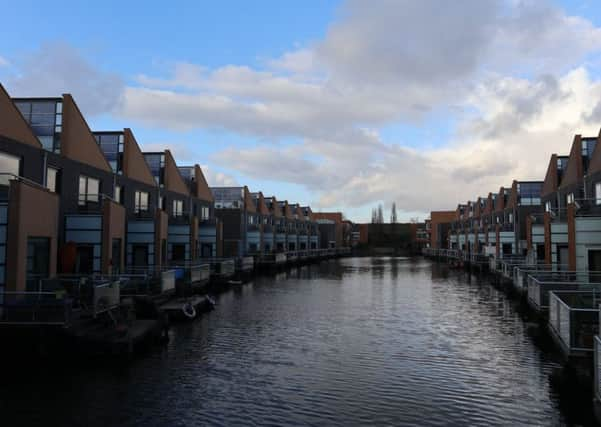Going Dutch to find flood solutions for future


While its primary role is to deliver H2o and maintain drains, Yorkshire Water is also one of the region’s top landowners.
Its sister company, Keyland Developments, is tasked with unlocking the potential of this asset by identifying land and buildings suitable for residential and commercial development. The idea, of course, is to maximise profit for the former publicly owned provider that was privatised in the 1980s, although Keyland has loftier ambitions.
Advertisement
Hide AdAdvertisement
Hide AdIts main aim is to secure planning permission for sites before selling them on to developers and self-builders but it has a track record for being innovative and commissions architects to come up with contemporary schemes for new homes, particularly for single dwellings in sensitive areas.
Its latest aim is to develop a new sustainability framework, which aims to reduce water and energy consumption, whiem improving construction materials, biodiversity and wellbeing.
Homework included a trip to the Netherlands, which is renowned for its water-sensitive, sustainable housing and fearless approach to building on land liable to flood.
Keyland staff were accompanied by Dr Adam Smith from Yorkshire Water and architect Jerry Tate, The fact-finding mission included visits to the first CO2 neutral district in the Netherlands and a tour of the Netherland’s newest city, Almere Poort.
Advertisement
Hide AdAdvertisement
Hide Ad“Large parts of the Netherlands sit below sea level and it’s flat, so rainfall is a real problem and developers have to think hard about how to get water off site without damaging other areas,” says Keyland Planning Manager Luke Axe. “They are innovative through necessity and use pumps and pressure systems.”
The Low Countries use the water collection and recycling systems, along with hydraulic foundations that allow a house to rise along with the water. This enables them to build on areas likely to flood. Keyland, however, say they have no intention of applying for permission to build on flood plains in Yorkshire.
“Our interest is looking at how to reduce water consumption and how we can prevent lessen the chance of flooding elsewhere,” says Mr Axe.
Keyland and Yorkshire Water are looking at ways to provide 100 per cent of a site’s water through rain capture, other closed loop systems and grey water recycling.
Advertisement
Hide AdAdvertisement
Hide AdWork is also under way to explore flood attenuation systems to provide a benefit elsewhere. Run off from housing sites can often cause issues for neighbouring land and water courses.
“Sustainability is also important to us and we are very interested in district heating systems and solar thermal technology. One building with a biomass boilercan supply the surrounding houses so they don’t need an individual boiler,” says Luke Axe. “Most volume builders in the UK don’t include these kind of systems. They have honed their construction model and deviating from it is more trouble than it’s worth. We are in a fortunate position of being one of the top landowners in Yorkshire, which means we don’t have the upfront cost of buying the land so we are in a position to do something different.”
Keyland is looking at joint ventures with developers, which would allow it to bring forward its ideas on water capture and sustainability.
“This will enable us to control the impact of a development on the wider environment. For example, if a site is upstream of a river that is prone to flooding, we can look at sustainable urban drainage systems – SUDS – that draw the water into the site rather than letting it flow out.”
Advertisement
Hide AdAdvertisement
Hide AdSUDS include green roofs, permeable paving, ponds, reed beds and wetland areas. “That’s the approach that most developers don’t take. They will use soakaways – porous pits that collect excess water but then allow it to soak into the ground.It’s the easiest thing to do but it isn’t necessarily the right thing to do because the water can have a negative impact elsewhere,” says Mr Axe. “Doing the right thing does not cost more. The cost comes in taking the time to do the research and planning and that is what we are doing now in compiling a sustainability framework.”